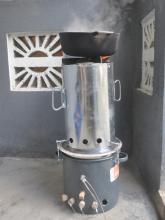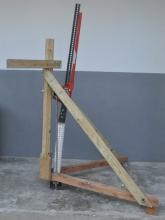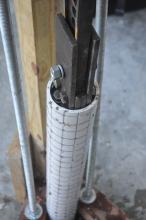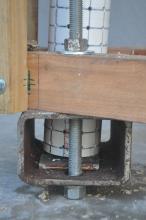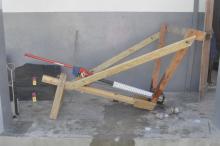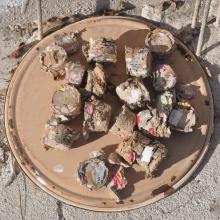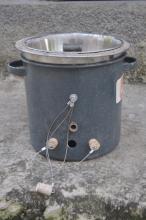Quoting "Prof. S.C. Bhattacharya" :
Dear all,
I would be happy to share some publications arising from the following
activities at the Asian Institute of Technology:
1. Sida funded Regional project: An information package (including
construction details) on biomass briquetting machines developed in a
number of Asian countries and design of natural- cross-draft gasifier stoves that can operate continuously is available. The briquetting machines developed
were improvements on standard screw-press heated die design. Cross-flow
gasifier stoves were designed for different sizes; these do not need any
blower and can operate continuously without any smoke.
The briquetting and gasifier stove work I mentioned was carried out under a
Sida-sponsored project at the Asian Institute of Technology (AIT). The
project involved researchers from 12 national research institutes of six
Asian countries, e.g., Bangladesh, Cambodia, Lao PDR, Nepal, Philippines and
Vietnam. The findings of the project were disseminated through national
dissemination seminars in these countries; published "Technology packages"
were distributed widely in the region and are still available for
downloading from the project website. We organized technology transfer
workshops, in which a number of NGOs form the region were invited, on most
of the technologies developed.
(There is no restriction on distribution of the technology packages.)
Unfortunately, the link of the project is not working due to heavy flood in
Thailand; AIT appears to be still under 2 m of water.
2. GTZ funded project on Biocoal: We used the term "Biocoal" (rather than
"Biochar") for charcoal produced from solid organic residues such as
agricultural residues and waste wood. The findings of the project were
reported in a book titled "Biocoal Technology and Economics" by "Regional
Energy Resources Information Center (RERIC)" (email:enreric@ait.ac.th).
The chapters of the 495-page book were:
- 1. State of the art of biocoal technology,
- 2. Biocoal technology: A comparison of options and recommendations,
- 3. Carbonisation of sawdust briquettes,
- 4. Laboratory-scale batch carbonisation selected residues,
- 5. Cost and availability of selected residues in Thailand,
- 6. Characterisation of selected residues,
- 7.Biocoal: Market requirements and Opportunities in Thailand, and 8. Economics of biocoal production in Thailand.
A few copies of the book are still available with RERIC. A number of
chapters of the book were summarised as journal articles; I will be happy
to
share some of these with interested persons for their personal use and
research purpose.
Other technology packages and published papers of the Sida project can be downloaded from www.retsasia.ait.ac.th. The biomass/stove group may be interested the package on drying, which includes a hybrid drier using solar energy and bioenergy from a gasifier stove, heat output of which could be automatically controlled by using a thermostat.
I also coordinated another regional project (Asian Regional Research Programme in Energy, Environment and Climate, ARRPEEC) funded by Sida in three phases during 1995-2005. One of the 4 projects of ARRPEEC was on biomass. Dissemination booklets of ARRPEEC and some of the papers published can be downloaded from http://www.arrpeec.ait.ac.th

